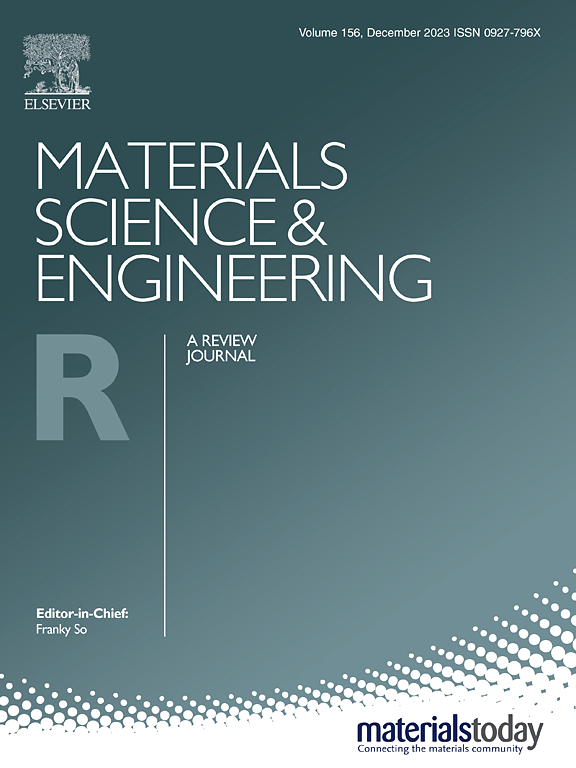Energy-autonomous and skin-adaptive sensor patch with monolithically nano-interconnected interfaces for spatiotemporal teleoperation
IF 31.6
1区 材料科学
Q1 MATERIALS SCIENCE, MULTIDISCIPLINARY
引用次数: 0
Abstract
Here, we present a energy-autonomous and highly skin-adaptive sensor adhesive patch with monolithic interconnections between its stretchable active layer and soft electrodes, significantly advancing virtual reality based spatiotemporal teleoperation. The highly deformable energy-autonomous sensor patch with super-adaptive skin adhesion is designed to reliably convert human biomechanical movements into electrical signals by reliably interconnecting with soft electrical multilayers. Monolithic multilayers include deformable top and bottom wrinkled electrodes embedded with carbon nanotubes monolithically embedded in middle active layer, providing ∼40 % enhanced self-powered sensing, stable stretchability, and revertability (<10,000 cycles). Additionally, a sensor integrated with a bio-inspired hierarchical octopus-beetle adhesive ensures robust and reversible adhesions in multi-directional skin adhesion under wet conditions while maintaining breathability and comfort for long-term wear. This design addresses the critical challenges of low power consumption for reliable signal transduction and mechanical mismatch limiting current skin-attached devices, enabling a human-friendly, precise, and durable device for immersive teleoperation technologies.
具有单片纳米互联接口的能量自主皮肤自适应传感器贴片用于时空遥操作
在这里,我们提出了一种能量自主和高度皮肤自适应的传感器贴片,其可拉伸有源层和软电极之间具有单片互连,显著推进了基于虚拟现实的时空遥操作。高度可变形的能量自主传感器贴片具有超自适应皮肤粘附性,通过与软电多层可靠互连,将人体生物力学运动可靠地转化为电信号。单片多层包括可变形的顶部和底部褶皱电极,其中碳纳米管单片嵌入中间有源层,提供约40% %增强的自供电传感,稳定的拉伸性和可复性(<10,000循环)。此外,传感器集成了仿生分层章鱼甲虫粘合剂,确保在潮湿条件下的多向皮肤粘附中具有坚固和可逆的粘附,同时保持长期穿着的透气性和舒适性。该设计解决了可靠信号转导的低功耗和限制当前皮肤附着设备的机械失配的关键挑战,为沉浸式远程操作技术提供了人性化,精确和耐用的设备。
本文章由计算机程序翻译,如有差异,请以英文原文为准。
求助全文
约1分钟内获得全文
求助全文
来源期刊

Materials Science and Engineering: R: Reports
工程技术-材料科学:综合
CiteScore
60.50
自引率
0.30%
发文量
19
审稿时长
34 days
期刊介绍:
Materials Science & Engineering R: Reports is a journal that covers a wide range of topics in the field of materials science and engineering. It publishes both experimental and theoretical research papers, providing background information and critical assessments on various topics. The journal aims to publish high-quality and novel research papers and reviews.
The subject areas covered by the journal include Materials Science (General), Electronic Materials, Optical Materials, and Magnetic Materials. In addition to regular issues, the journal also publishes special issues on key themes in the field of materials science, including Energy Materials, Materials for Health, Materials Discovery, Innovation for High Value Manufacturing, and Sustainable Materials development.
 求助内容:
求助内容: 应助结果提醒方式:
应助结果提醒方式:


